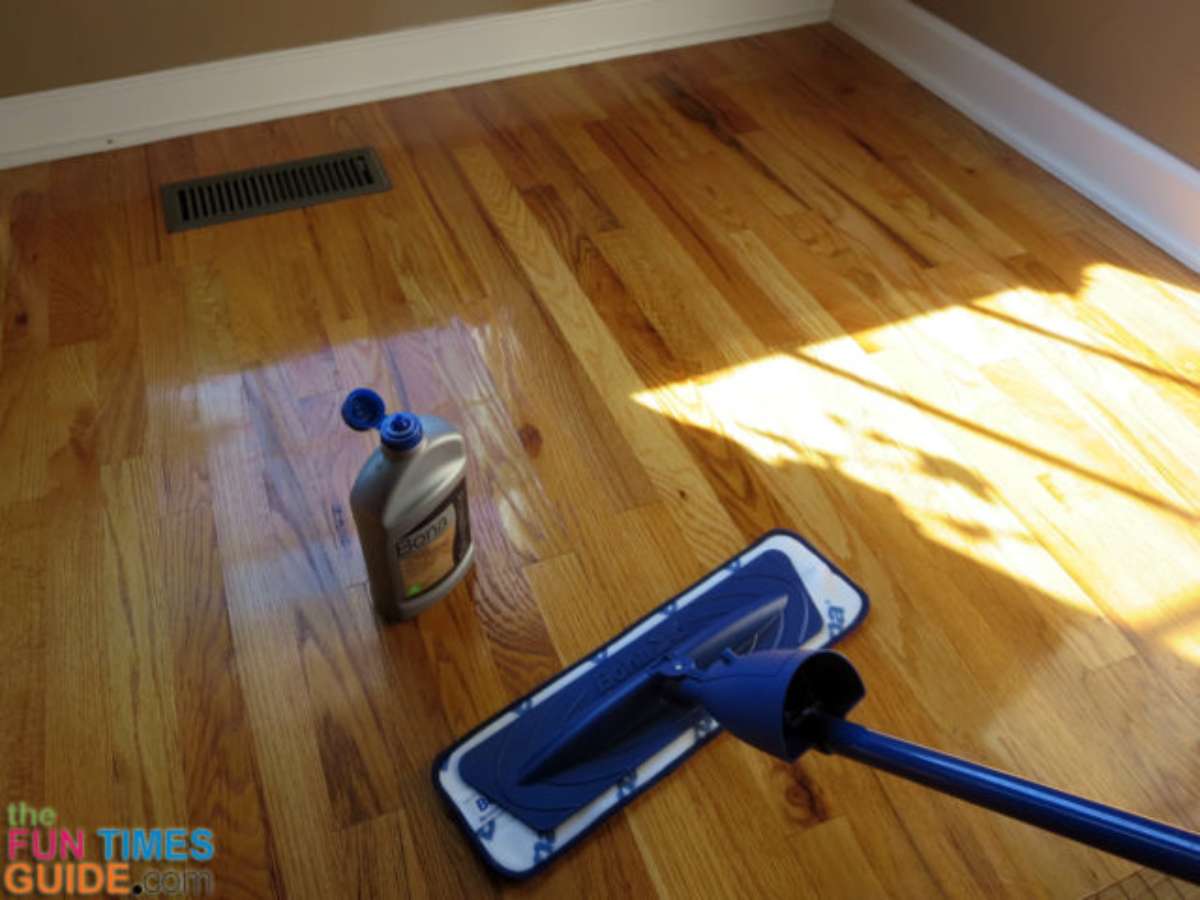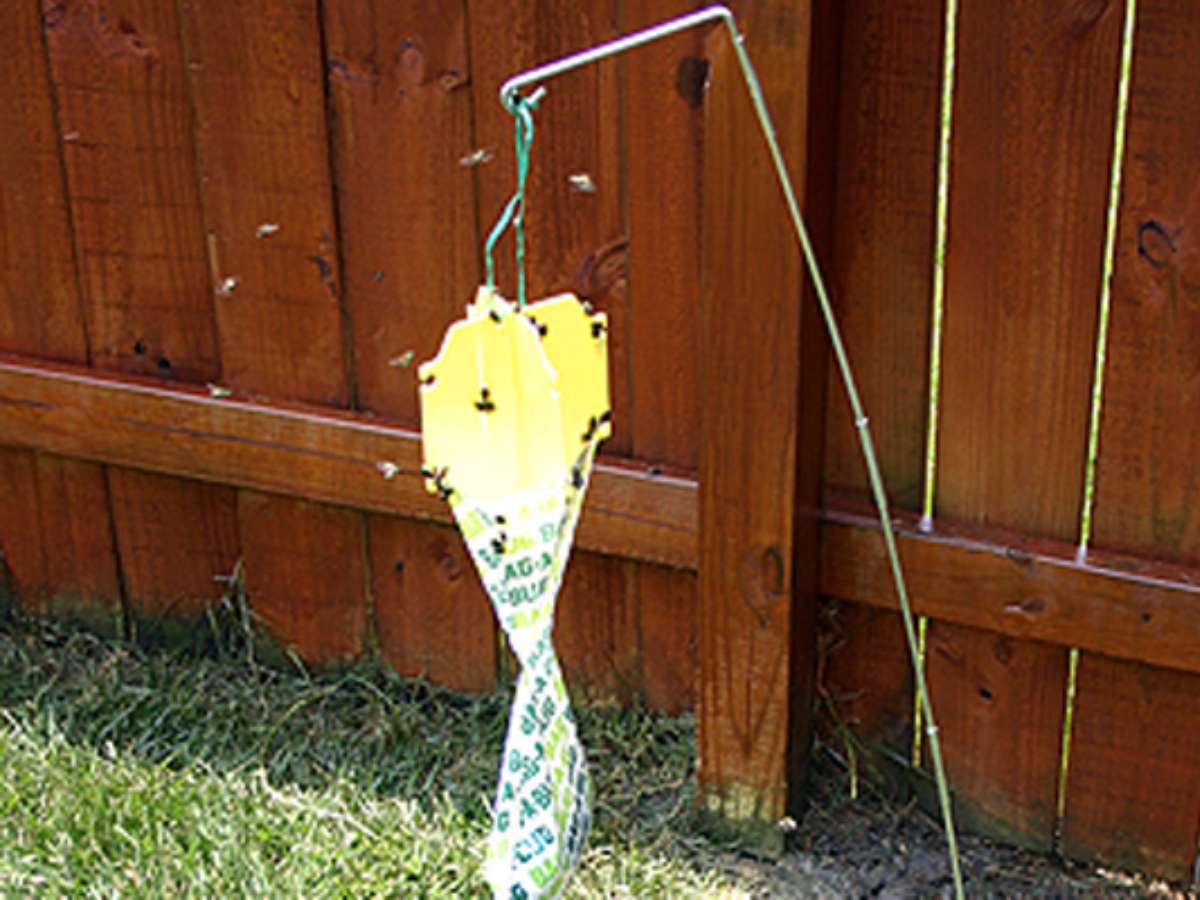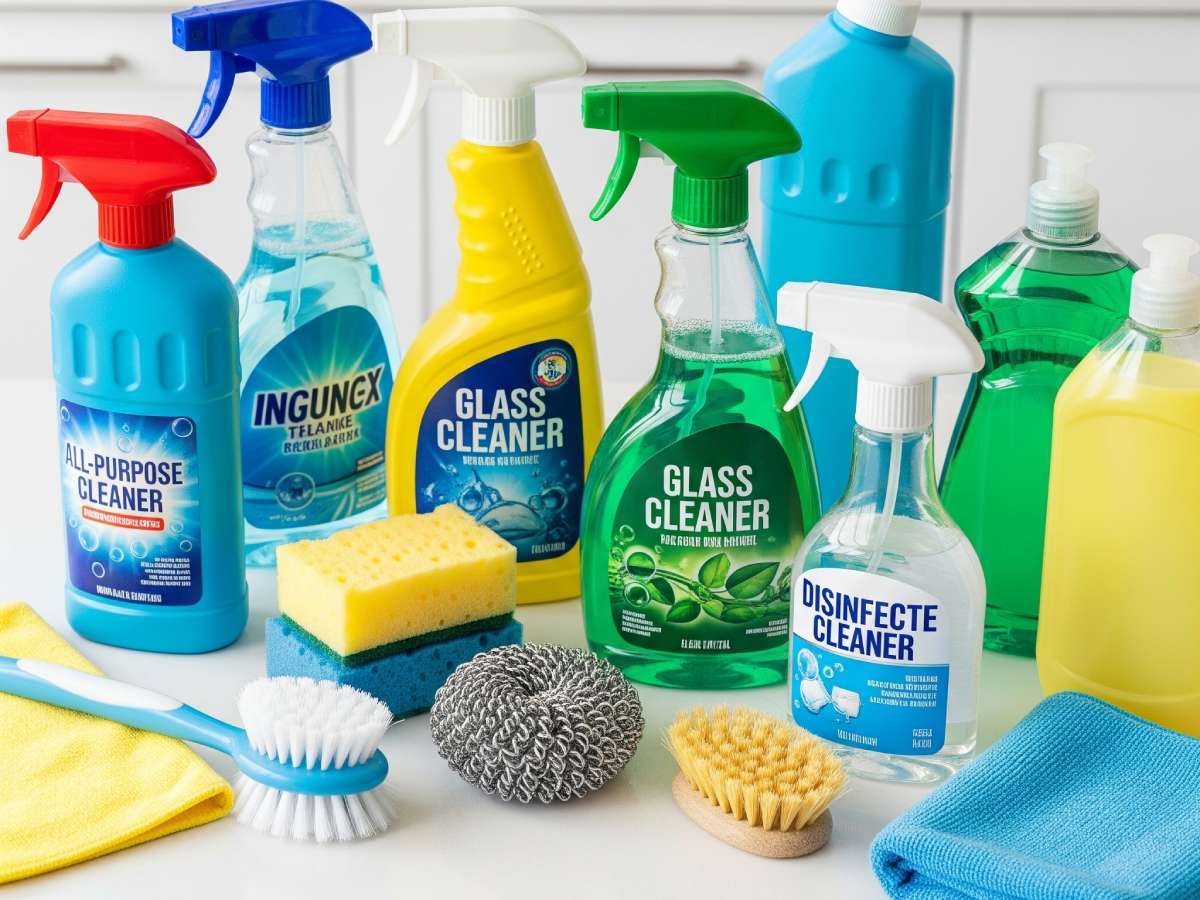Have you ever noticed how some roofs have black streaks streaming down the asphalt shingles?
Sometimes, you’ll see a green mossy growth on the roof.
Both of those are forms of roof mold or roof algae.
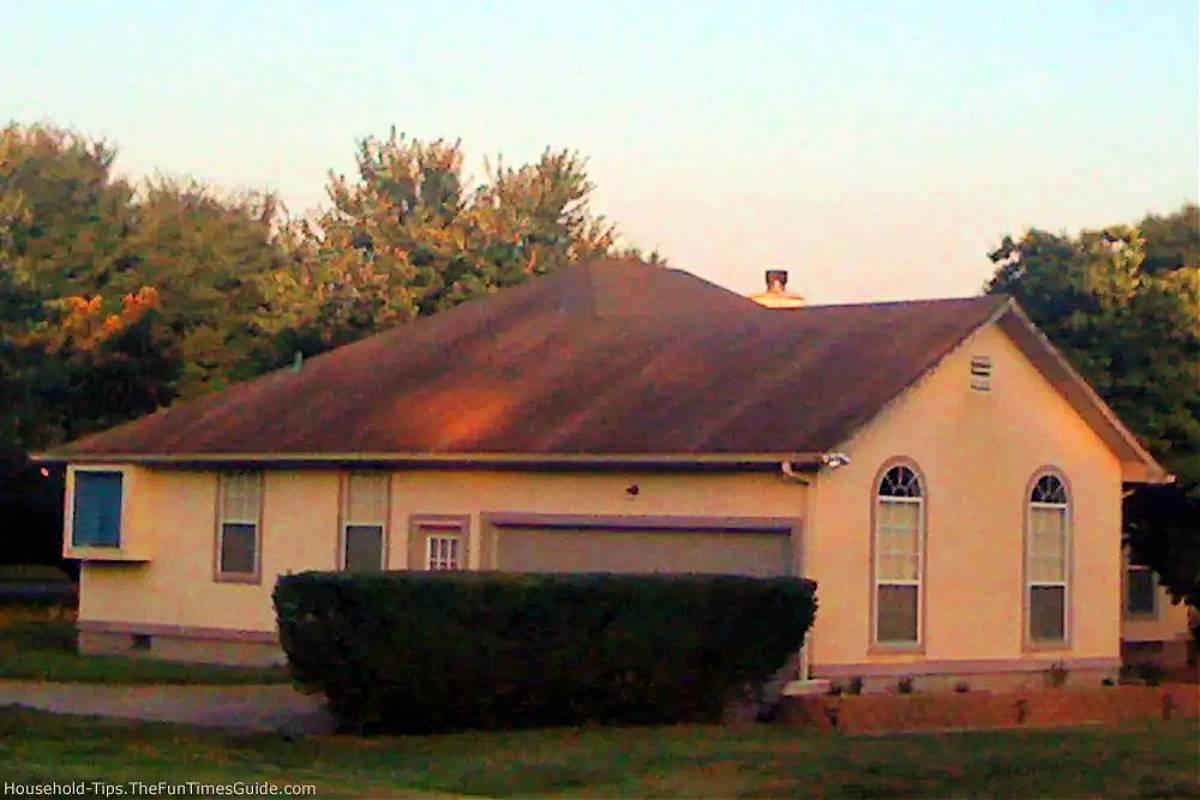
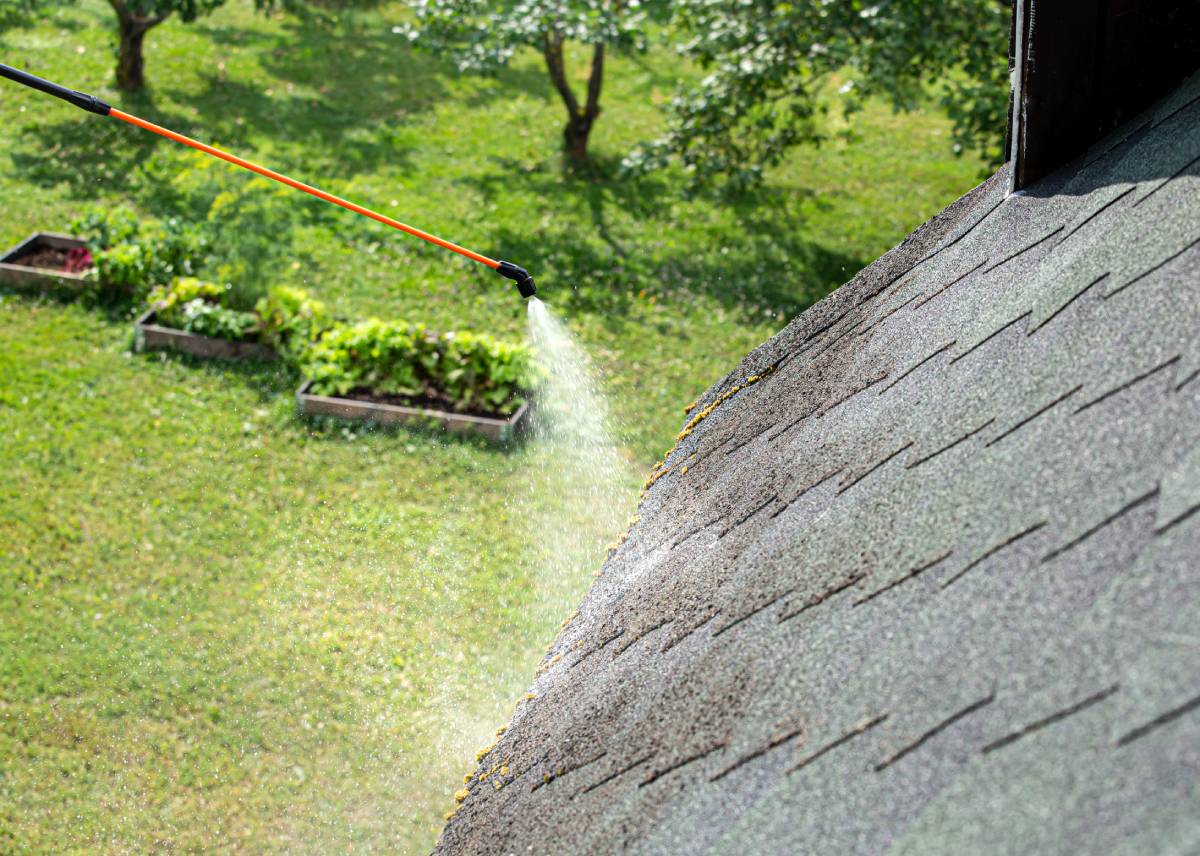
In this article, you will learn why it accumulates in the first place, and how to remove black streaks from roof shingles yourself…
What Causes Black Streaks On Roof Shingles?
Believe it or not, those black streaks only appear on roofs in certain areas of the country (places that tend to be the most humid).
Furthermore, they will only appear on the north side of the roof.
The black streaks are also known as black algae or roof mold.
Technically, the black streaks on roofs are a form of algae known as Gloeocapsa Magma.
Here’s why algae and mold grow on roof shingles:
If you live in a humid area of the country, you’ve probably seen unsightly dark streaks on asphalt shingle roofs. Though often attributed to an accumulation of dirt, defective shingles, mold, or mildew; the most common culprit is actually a blue-green algae known as Gloeocapsa Magma that is spread by airborne spores. While algae growth does little harm to roofing, the stains don’t help the overall appearance or resale value of your home.
~ Danny Lipford
The algae grow on the north side of the roof that gets the least amount of sun and stays damp the longest. They feed on limestone filler in the shingles and grow and darken until removed. Airborne algae spores are carried from roof to roof and can infest a whole neighborhood.
~ Cleaning Roofs FAQ
How To Remove Black Streaks From Roof
To remove the algae from asphalt shingles, you basically have 3 options:
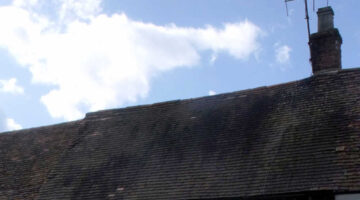
#1 – You could use regular household bleach to remove the algae from your roof.
Here’s how to use household bleach to remove black roof streaks:
Spray wash the roof with a 50% mix of water and bleach to get rid of the algae. (No pressure washers, please. They’re likely to damage the shingles.) Just be sure to wet your foundation plantings first, and rinse everything in clean water when you’re done. Plants don’t like bleach, and wetting them with plain water first protects them.
~ This Old House
A bleach or chlorine-based solution applied with non-pressure methods will kill lichen and moderate moss growth almost instantly. It should turn a whitish color within minutes, which tells you that it’s dead. Unlike black algae stains which come off immediately with the rinse phase of the cleaning, dead lichen and moss will require a few heavy rains to finish rinsing off the roof. It could take awhile but rest assured that lichen and most moss situations, once dead, will eventually dislodge and rinse off the roof thanks to mother nature.
~ Roof Cleaning Chemicals
#2 – You could use oxygen bleach, instead of straight household bleach to remove the algae.
Some people prefer not to use chlorine-based products on an asphalt roof. The fear is that the bleach will damage the asphalt shingles — due to its high sodium content. The use of bleach on asphalt shingles could reduce the elasticity of the asphalt — resulting in stiff, brittle shingles. And they may eventually curl, as well.
Here’s how to use oxygen bleach to remove black roof streaks:
The way to clean off roof algae is to go ahead and mix up some oxygen bleach with water. It is a powder. It is safe. It does not take the color out of the shingles and it does not hurt the shingles or vegetation or anything else near your home. What you do is put it into a pump sprayer, spray it on the roof and you need to keep the roof wet with the solution for about 10 or 15 minutes. The oxygen bleach starts to go ahead and attack the roof algae and it does its best to kill it and take away the stains. Take a scrub brush. Lightly scrub the shingles. Apply more solution if you have to, to get a nice workable solution. And then once the shingles are cleaned, you go ahead and take a hose and just rinse the roof off, it is really that simple. Okay, this roof is going to need as second application, maybe even a third when it is extra dirty.
~ Expert Roof Repair
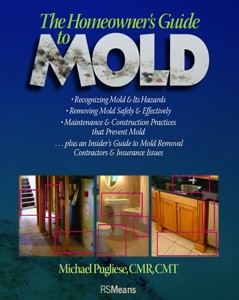 #3 – Finally, there are special products made just for removing algae from asphalt shingles that work really well.
#3 – Finally, there are special products made just for removing algae from asphalt shingles that work really well.
These include:
How To Prevent Black Streaks On Roof
If you’ve already removed the algae from your roof once and you want to make sure you don’t get it again, or if you’re building a new house and you want to make sure that your roof doesn’t get those black streaks from algae, there are 2 things you can do to prevent the algae from forming:
#1 – Look for algae-resistant roof shingles (“AR” on the package) which have either copper or zinc added to prevent the algae from forming.
Here’s how AR roof shingles work:
If exposed to sunlight, the ultraviolet rays will readily break down asphalt shingles. That’s why the shingles you see are covered with the small colored ceramic granules. These create a powerful sunscreen and offer you different colors to match your exterior decorating scheme. Many shingle manufacturers make shingles that have special colored granules that contain copper. These help to prevent the ugly black roof-algae stains you might see on your existing roof or that of a neighbor.
~ Ask The Builder
#2 – Add zinc strips or copper strips underneath your roof shingles.
Here’s how to add mold-preventative strips under roof shingles:
To keep the algae from coming back, insert 6-inch-wide strips of zinc or copper under the row of shingling closest to the roof peak, leaving an inch or two of the lower edge exposed to the weather. That way whenever it rains, some of the metal molecules will wash down the roof and kill any algae trying to regain a foothold on your shingles.
~ This Old House
Like this post? Save it to read again later… or share with others on Pinterest!



